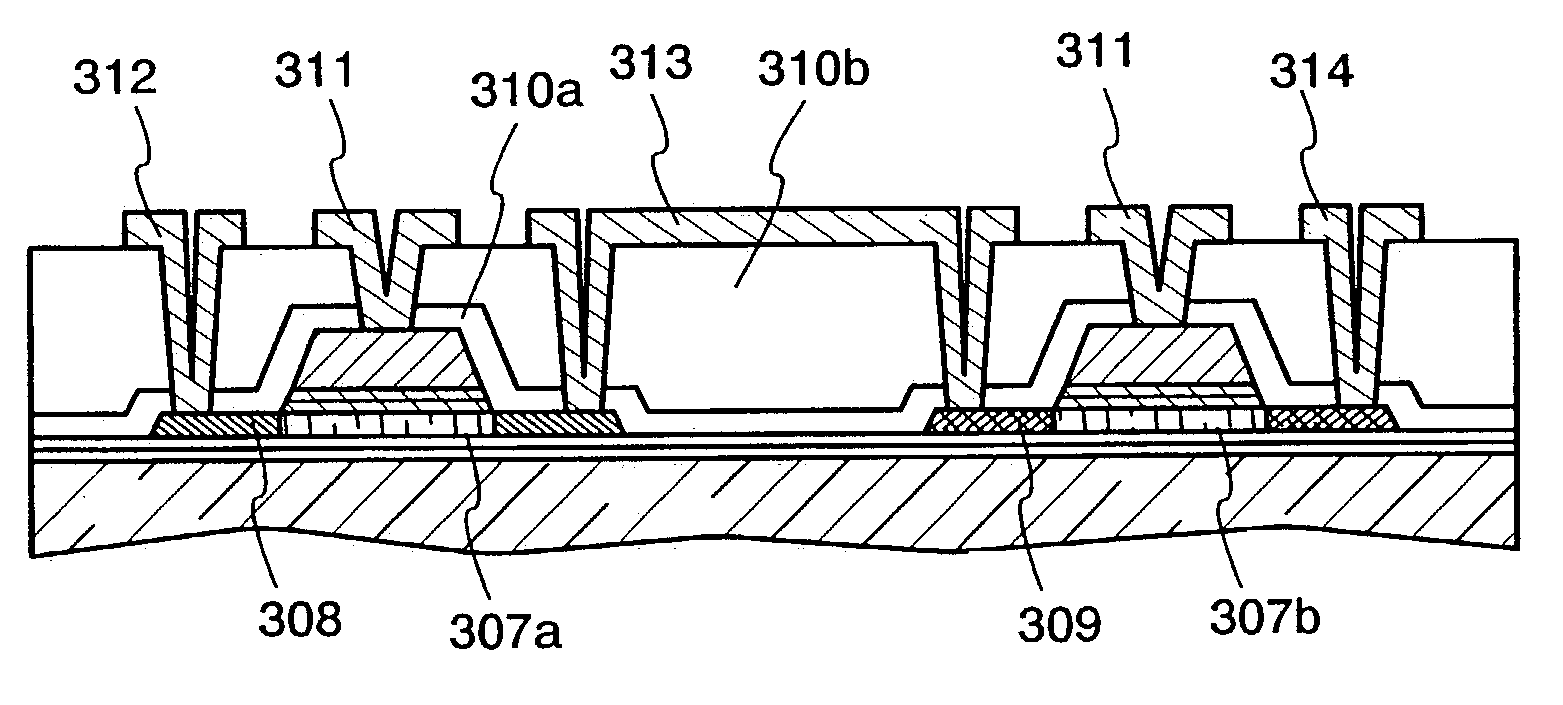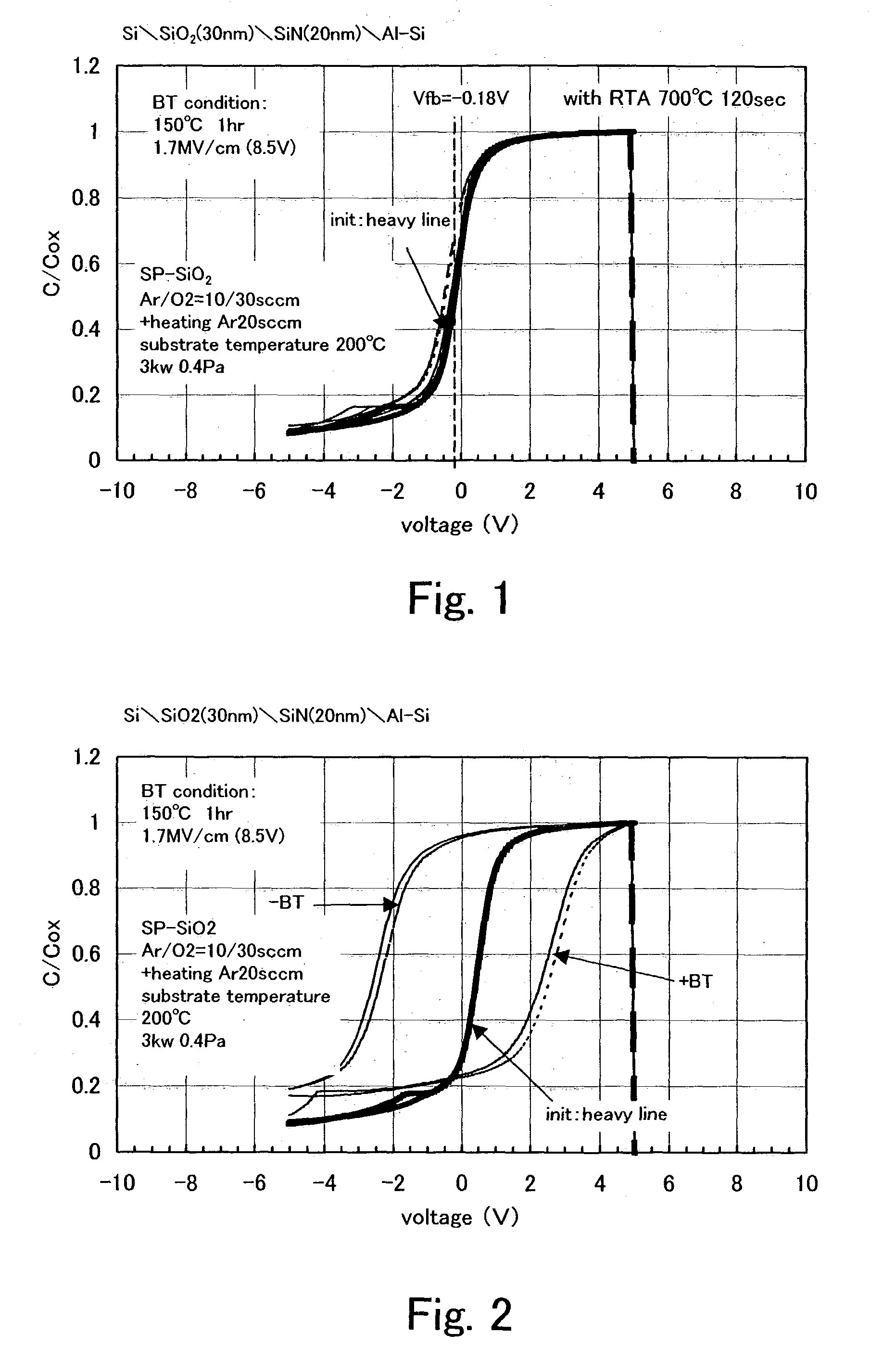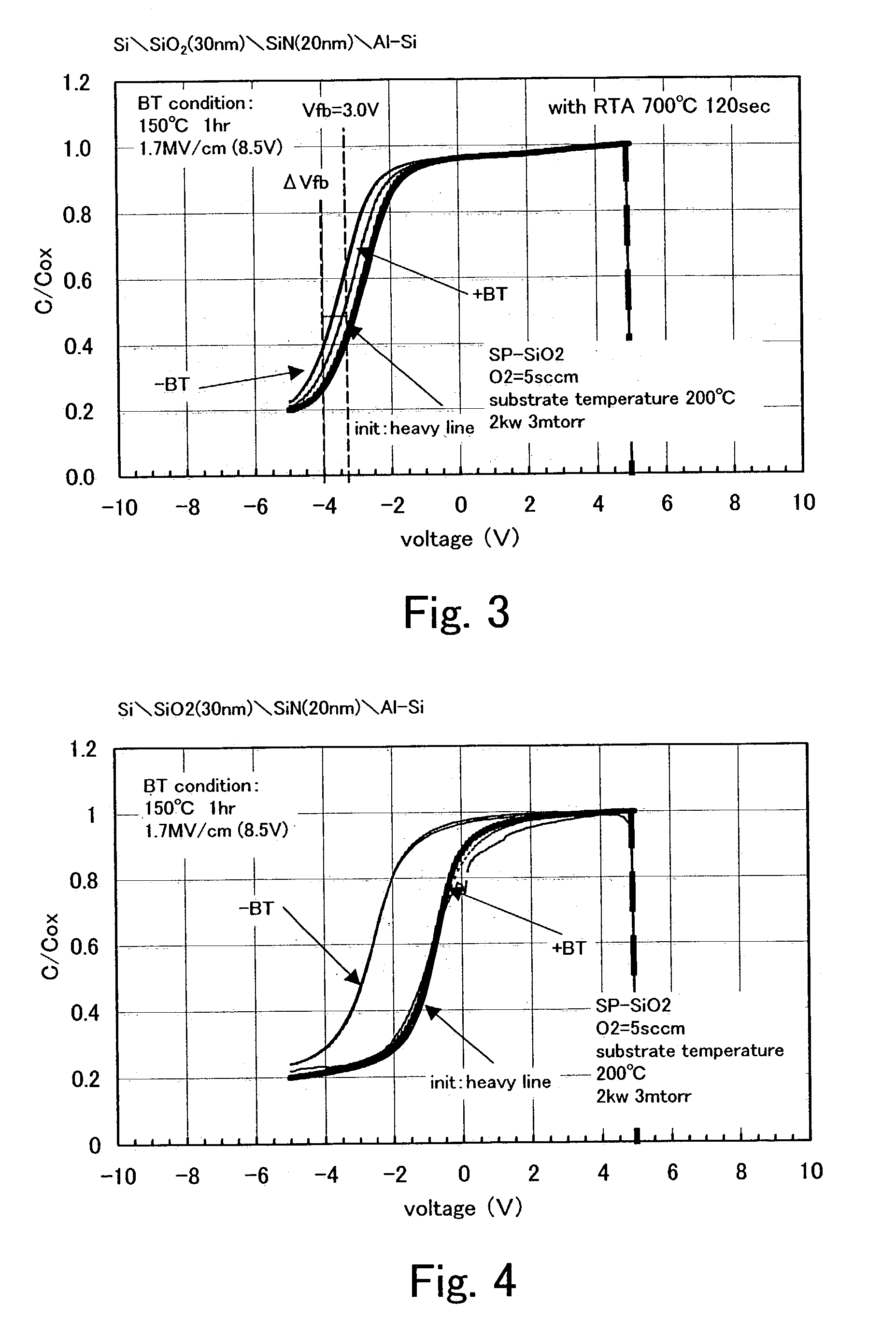Manufacturing method of semiconductor device
a manufacturing method and semiconductor technology, applied in the field of semiconductor devices, can solve the problems of lack of thermal stability, easy damage by charged particles, and silicon oxide isolating films, etc., and achieve the effects of high reliability, good quality and fineness, and high performan
- Summary
- Abstract
- Description
- Claims
- Application Information
AI Technical Summary
Benefits of technology
Problems solved by technology
Method used
Image
Examples
embodiment mode 1
[Embodiment Mode 1]
[0045]A stacked body of a silicon oxide film, which is formed by the sputtering method by applying high-frequency power in an atmosphere containing oxygen or oxygen and a rare gas using silicon as a target, and a silicon nitride film, which is formed by the sputtering method by applying high-frequency power in an atmosphere containing nitrogen or nitrogen and a rare gas is used as a gate insulating film of an insulated gate field effect transistor, which is a main component of a semiconductor device, typically a thin film transistor (TFT). The stacked body is deposited and formed at a substrate heating temperature of 400° C. or less, preferably 300° C. or less and is thereafter capable of reducing a defect density on a stacked layer interface or a defect density in a film and distortion by a heat treatment at a temperature higher than that. Preferably by performing a heat treatment at the temperature of 600 to 800 ° C., and particularly preferably by performing ra...
embodiment mode 2
[Embodiment Mode 2]
[0070]An embodiment mode of forming a semiconductor device on a glass substrate with a distortion point of 700° C. or less will be described in relation to a structure in which a stacked body, which is obtained by stacking a silicon oxide film and a silicon nitride film manufactured by the high-frequency sputtering method using silicon as a target and subjected to a heat treatment, is incorporated as a gate insulating film for a TFT.
[0071]As a substrate which can be applied in this embodiment mode, a glass substrate containing barium borosilicate glass, alumino borosilicate glass, alumino silicate glass, or the like as a material is suitable. Representatively, a 1737 glass substrate (distortion point 667° C.) manufactured by Corning Incorporated, AN 100 (distortion point 670° C.) manufactured by Asahi Glass Co., Ltd., and the like are applicable. However, it goes without saying that other similar substrates may be applied without any specific limitation. In any ca...
embodiment mode 3
[Embodiment Mode 3]
[0094]After the crystalline silicon film shown in FIG. 9B is obtained in Embodiment Mode 2, a laser oscillator using crystals of YAG, YVO4, YLF, YalO3, or the like doped with Cr, Nd, Er, Ho, Ce, Co, Ti, or Tm is applied to the film as a solid state laser of a continuous oscillation type as shown in FIG. 12. A basic wave in the laser oscillator is different depending upon a material to be doped, and a laser beam having the basic wave of about 1 μm is obtained. A higher harmonic wave as opposed to the basic wave can be obtained by using a nonlinear optical element. In the case in which the above-mentioned laser oscillator is used, a wavelength in a visible light region is substantially obtained with a second harmonic and a wavelength of an ultraviolet region is substantially obtained with a third harmonic. Representatively, an Nd:YVO4 laser oscillator (basic wave: 1064 nm) is used to apply a second harmonic thereof (532 nm). Laser beams of this oscillator are conden...
PUM
| Property | Measurement | Unit |
|---|---|---|
| temperature | aaaaa | aaaaa |
| temperature | aaaaa | aaaaa |
| power frequency | aaaaa | aaaaa |
Abstract
Description
Claims
Application Information
 Login to View More
Login to View More - R&D
- Intellectual Property
- Life Sciences
- Materials
- Tech Scout
- Unparalleled Data Quality
- Higher Quality Content
- 60% Fewer Hallucinations
Browse by: Latest US Patents, China's latest patents, Technical Efficacy Thesaurus, Application Domain, Technology Topic, Popular Technical Reports.
© 2025 PatSnap. All rights reserved.Legal|Privacy policy|Modern Slavery Act Transparency Statement|Sitemap|About US| Contact US: help@patsnap.com



